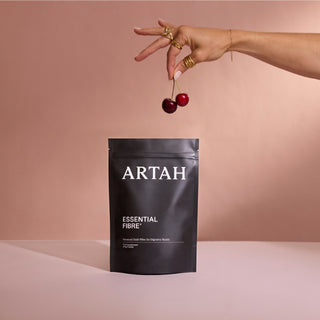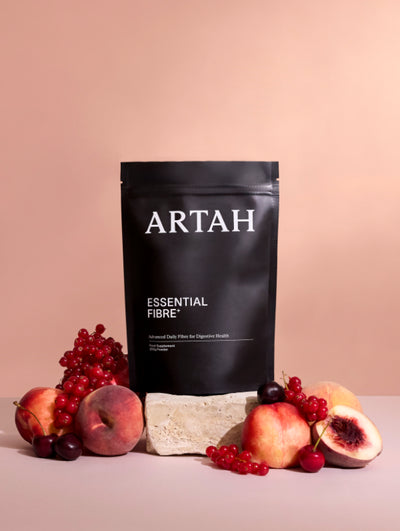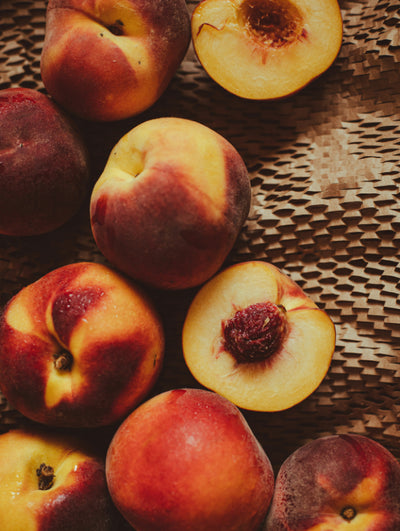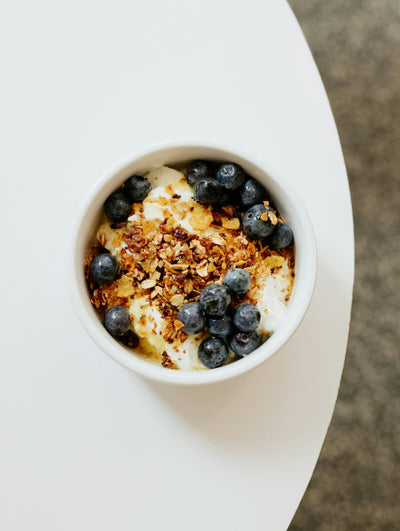The verdict is in: intermittent and periodic fasting have emerged as generally safe, effective lifestyle strategies to help support longevity and cellular health. But for some of us, the idea of fasting elicits fear of discomfort, extreme hunger and poor energy. The good news is, it doesn't need to be this way; in fact when it's done correctly, it can help us unlock far better energy, focus, and productivity. Here's what you need to know.
Fasting Isn't New.
Fasting has been used as a therapeutic tool for millennia; it can be found in virtually every ancient civilisation and religion, and is used as a form of dietary therapy in Ayurveda, Traditional Chinese Medicine and Naturopathic Medicine. The term fasting is used in many different ways, and there’s no rigid definition of how long it should be. In essence, a fast is just an abstinence from eating for a set amount of time.
A pure fast (aka, the scarier kind of fast) would be nil by mouth (except water, clear broths and/or herbal teas) and is a full caloric fast. This is generally more therapeutic in nature and should usually be done under medical supervision or used sporadically under the guidance of a health practitioner. Intermittent fasting and other modified fasting techniques, however, are more user friendly, and can easily be implemented as weekly, monthly, or quarterly practices to help optimise health. Here are some of the ways to make fasting a little less scary.
The No-Fast Fast
WHAT IT IS:
In our no-fast fasting method, it’s all about cleaning up food timing habits. This may be surprising, but we eat for an average of 14-16 hours a day, and with modern snacking habits, our gut often has little to no downtime to rest, repair and recover. We know that extending the time between meals has a multitude of benefits, including microbiome recovery and improvements in gut motility, which is why stretching the overnight fast to 12 hours and avoiding snacking (unless neccessary) is the first step in your foray to fasting. The natural cleansing waves in our gut are triggered after about 3 hours without feeding, so try to leave at least this time between meals.
IDEAL FREQUENCY:
Daily! But, if this is a drastic change to current eating habits, work your way up to this over time.
GOOD FOR:
- Beginners
- Habitual snackers
- Those wanting to make quick and easy changes to their nutrition, and currently don't leave 12 hours overnight.
WHAT TO WATCH OUT FOR:
- If you’re accustomed to snacking and more frequent meals, you may need to bulk up your main meals to ensure you’re satiated and eating enough through the transition.
- If you’re used to eating really early in the morning, be mindful of meal prep and ways you can incorporate this into your work regime.
Time Restricted Eating
WHAT IT IS:
In time restricted eating (TRE), food is consumed in only in a certain timeframe, called the ‘feeding’ window. The most common is 16:8, where you fast for 16 hours and eat within an 8 hour window, however beginners can start with 14:10. Usually this is done with a full calorie load.
IDEAL FREQUENCY:
It’s beneficial to aim for daily 12:12 fasting/feeding, however, longer for fasts of 16:8, aim for 2-3 times per week, depending on your lifestyle.
GOOD FOR:
- This is the easiest, most tolerated way to start a ‘fasting’ practice and build fasting tolerance
- Has been shown to improvement in insulin sensitivity, reduce waist circumference (visceral body fat), and has generally better adherence than calorie centric regimes
- Low frequency 16:8 best for weight maintenance + cyclical women
- Post menopausal women + men
- Individuals with IBS/gut issues
- Longevity
NOT AS GOOD FOR:
- High volume exercisers; it can be difficult to get enough calories in a set window if used as a regular, ongoing practice
- Individuals with low body weight
- Excess stress + lack of sleep
WHAT TO WATCH OUT FOR:
- Be mindful of how this feels; if you started to feel physiologically ‘stressed’ using this method then you should reduce the frequency to IF
- For women, this can be challenging to maintain in weeks 3-4 of menstrual cycle or in general for cyclical women; consider timing this with your cycle in the follicular phase, and moving to 12:12 in luteal phase
- If fasting in the morning, be mindful of alcohol intake the night before.
- Calories: the benefit to this type of fasting is not in caloric reduction, but rather a period of time for the microbiome and repair systems in the body to do their work. Prolonged calorie reduction can actually promote fat accumulation and reduce metabolic rate (2) Aim to break the fast with a meal rich in protein, fibre, and healthy fats, and try to maintain a full calorie load.
If you need help doing it: Try The Metabolic Reset, our best-selling 21 day nutrition programme, complete with 90+ recipes
Fasting Mimicking Diet
WHAT IT IS:
A period of reduced caloric intake to mimic the physiological benefits of fasting, which include autophagy and cellular repair. An FMD is typically a minimum of 5 days and maximum of 10 days, follows a plant based diet, and reduces calories to around 500-800 per day (depending on individual/starting point). This is a relatively easy programme to follow, especially with a few days of prep ahead of time.
FREQUENCY:
- No more than 1 x per quarter
- The most important thing is not to overdo it
GOOD FOR:
- Those who would benefit from scheduling in a regular reset to rest and recovery from a hectic lifestyle
- Getting the longevity/autophagic benefits of a fast without going through a highly restrictive programme
- Visceral weight loss, rest + repair: In a randomized clinical trial with 100 relatively healthy volunteers, FMD cycles lasting 5 days, carried out once per month for 3 months, reduced multiple risk factors for age-related diseases including visceral fat, blood pressure, IGF-1, a decrease in glucose, triglycerides, cholesterol and C-reactive protein in participants with elevated markers at baseline.(3)
- Less frequent fasts are better for athletes/extreme exercisers (as a break to rest and repair) as opposed to continued TRE.
- Inflammation/ healing
- Ageing/longevity
NOT AS GOOD FOR:
- Individuals with low body weight or amenorrhoea
- Individuals with a history of ED
- Trying to conceive (unless runway is long and weight loss has been advised)
- Must be avoided in pregnancy or in T1D
WHAT TO WATCH OUT FOR: It is difficult to keep up the intensity of exercise, however, it’s more important to rest/walk/do low intensity exercise during FMD’s, and rest is a part of the programme.
If you need help doing it: The 5 Day Cleanse, our easy to follow FMD programme, complete with yoga videos to follow, daily recipes and restorative breath work.

Disclaimer:
The information presented in this article is for educational purposes only and is not intended to diagnose, prevent, or treat any medical or psychological conditions. The information is not intended as medical advice, nor should it replace the advice from a doctor or qualified healthcare professional. Please do not stop, adjust, or modify your dose of any prescribed medications without the direct supervision of your healthcare practitioner.
References:
- Longo VD, Di Tano M, Mattson MP, Guidi N. Intermittent and periodic fasting, longevity and disease. Nat Aging. 2021 Jan;1(1):47-59. doi: 10.1038/s43587-020-00013-3. Epub 2021 Jan 14. PMID: 35310455; PMCID: PMC8932957.
- Redman LM et al. Metabolic slowing and reduced oxidative damage with sustained caloric restriction support the rate of living and oxidative damage theories of aging. Cell Metab27, 805–815 (2018)
- Wei M et al. Fasting-mimicking diet and markers/risk factors for aging, diabetes, cancer, and cardiovascular disease. Sci. Transl. Med9, eaai8700 (2017)


















































